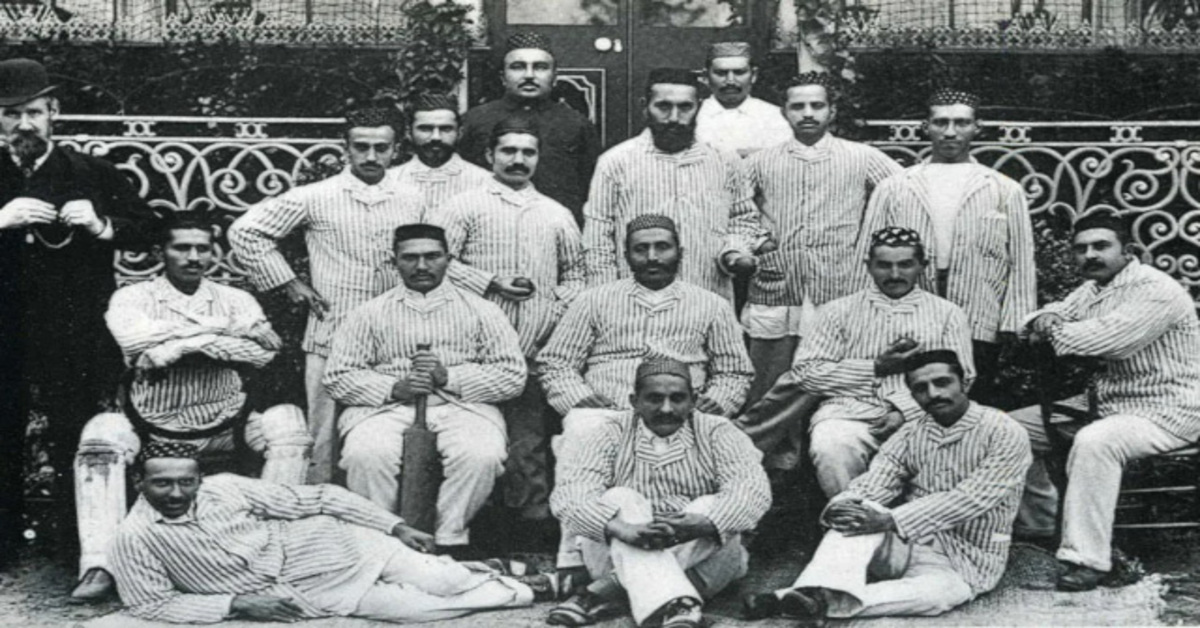The Epic Journey of Indian Cricket: From Colonial Beginnings to Global Dominance
Cricket in India is more than just a sport—it’s an emotion, a unifying force, and an essential thread in the fabric of the nation. But India wasn’t always a cricketing powerhouse. Its journey from colonial-era beginnings to becoming a global superpower in world cricket is a story filled with grit, transformation, and cultural significance. Indian cricket history is a compelling tale of resilience, legends and passion.
Early Days: Cricket In India Under the British Raj
Cricket was introduced to India in the early 18th century by British merchants and colonial officers. The first recorded cricket match in India took place in 1721 near Baroda. Over the next century, the game remained confined mostly to the British elite and the Parsi community in Bombay, who took a keen interest in the sport.
In 1848, the Parsis formed the first Indian cricket club—The Oriental Cricket Club. This was a turning point. Soon, other communities joined in: Hindus, Muslims, and Europeans formed their own clubs, and inter-community tournaments began in Bombay, fostering competitive cricket.
The First Step onto the World Stage- Indian Test Cricket
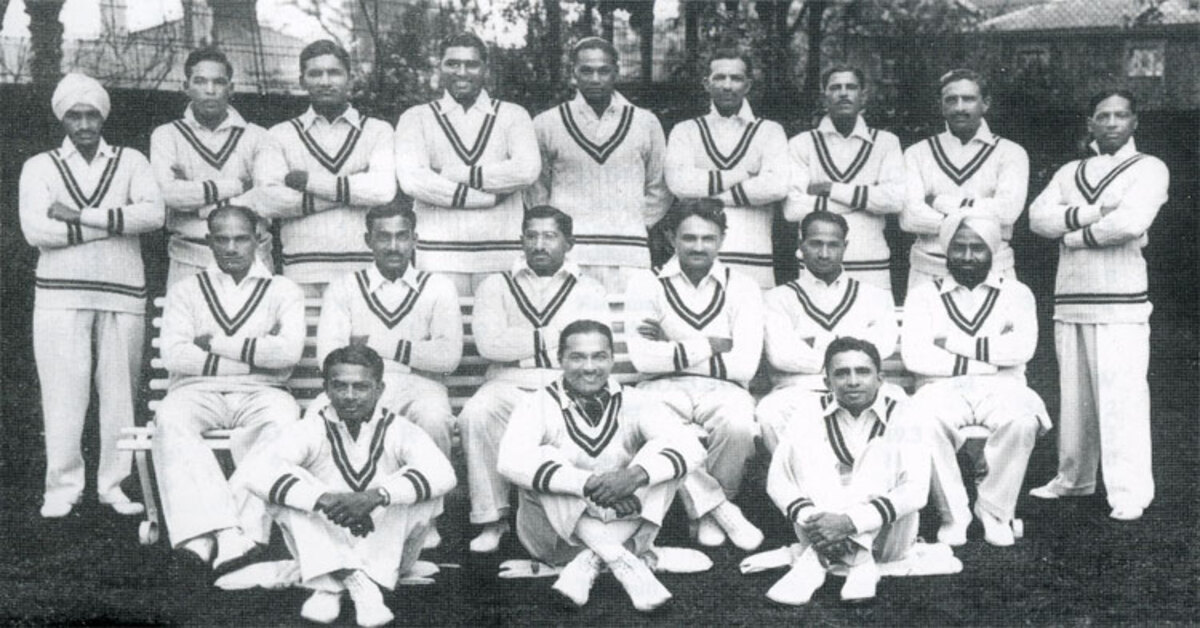
The 1932 Indian Test Cricket team that toured England. Maharaja of Porbandar, Maharaja Rana Shri Sir Natwarsinhji Bhavsinhji (Captain), seated 3rd from right with K. S. Limbdi (Vice-captain) sitting on his right and C. K. Nayudu sitting on his left. (Source: Wikipedia)
India made its international debut in Test cricket in 1932 at Lord’s, led by C.K. Nayudu. Though the team lost to England, the match marked the beginning of India’s formal presence in world cricket. Matches in the pre-independence era were few and far between, and India struggled to find its footing.
But legends like Lala Amarnath, who scored India’s first Test century in 1933, laid the foundation for future success.
Post-Independence Growth: A New Identity- first test victory


India’s first test victory after 20 years. Indian team in 1952. (Source: AVP News Live)
After gaining independence in 1947, cricket became a platform for India to assert its national identity. Players like Vijay Hazare, Polly Umrigar, and Vinoo Mankad brought pride to the country with notable performances.
In 1952, India recorded its first Test victory against England at Madras (now Chennai). Over time, Indian cricket began to mature, gaining experience through bilateral tours and home series.
The 1970s and 1980s: The Rise of Giants
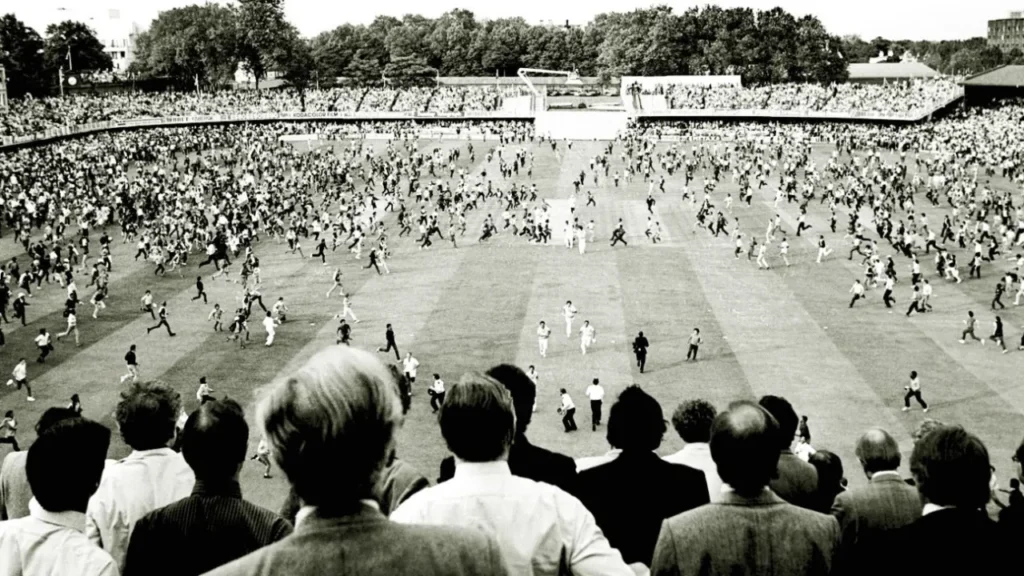


India’s first ever Cricket World Cup Victory in 1983 led by captain Kapil Dev and Vice Captain Mohinder Amarnath. (Image Source: BCCI, Amazon, Wikipedia)
This era saw the emergence of true icons. Sunil Gavaskar redefined batting with his grit and technique, while Kapil Dev led India with flair. In 1983, under Kapil Dev’s captaincy, India shocked the world by winning its first Cricket World Cup at Lord’s—an event that changed Indian cricket forever.
This period also marked the rise of spin legends like Bishan Singh Bedi, Erapalli Prasanna, and Bhagwat Chandrasekhar, who formed India’s famed spin quartet.
Sachin Tendulkar and India’s Cricketing Rise
In 1989, a 16-year-old boy named Sachin Tendulkar debuted, beginning a new chapter. For the next two decades, Sachin became the face of Indian cricket. He broke records, inspired generations, and symbolized the country’s growing dominance. He is the only Indian cricketer revered as the ‘God of Cricket.’
With players like Rahul Dravid, Sourav Ganguly, Anil Kumble, and later MS Dhoni and Virender Sehwag, India developed a balanced, world-class team.
2007–2011: India’s Second Golden Age

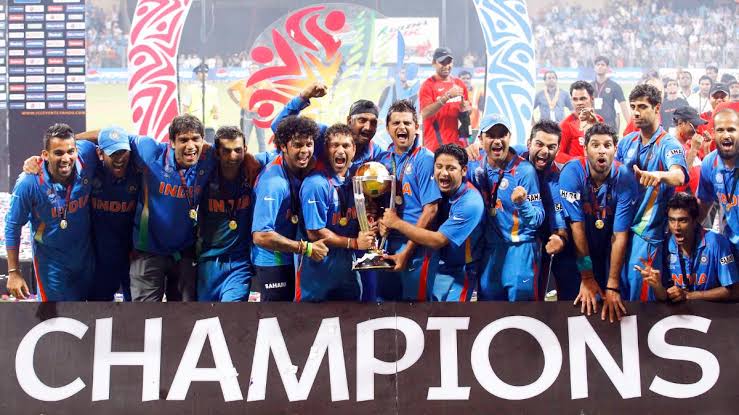
T20 World Cup winning moments and 2011 Cricket World Cup winning champions (Image source: BCCI.TV)
In 2007, under MS Dhoni’s leadership, India won the inaugural T20 World Cup in South Africa, sparking a revolution in Indian cricket.
This win laid the foundation for the launch of the Indian Premier League (IPL) in 2008, changing cricket’s financial and entertainment landscape.
In 2011, India won its second ICC Cricket World Cup, at home, with Dhoni hitting the winning six in Mumbai. Gautam Gambhir played a crucial knock of 97 runs under pressure, anchoring the chase. Yuvraj Singh, who had been the Player of the Tournament, delivered with both bat and ball throughout the World Cup and provided the much-needed stability and breakthroughs in the final.
This win united a billion hearts and cemented India’s status as a modern cricketing superpower.
Recent Years: Sustained Excellence
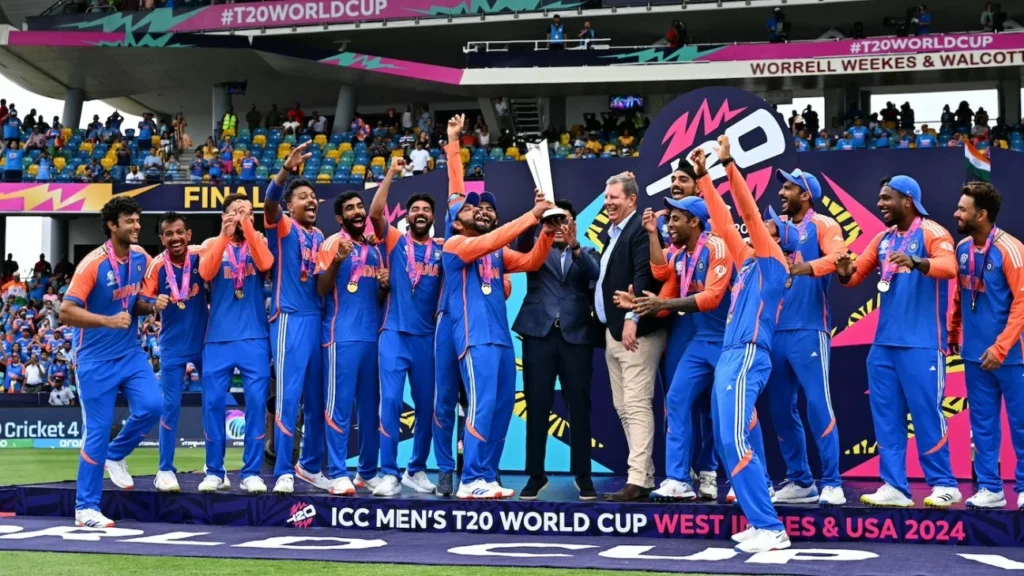
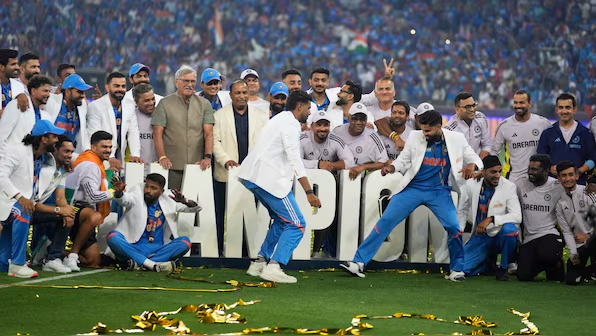
India’s winning moments continued in year 2024 & 2025 at international level. ICC men’s T20 World Cup & ICC Champions Trophy 2025 under captain The Hitman- Rohit Sharma (Image Source: espncricinfo & firstpost.com)
Under Virat Kohli’s captaincy, India dominated world rankings, particularly in Test cricket, and reached the finals of major tournaments. India’s fast bowling revolution—led by Jasprit Bumrah, Mohammed Shami, and Ishant Sharma—brought a new dimension to its cricketing arsenal.
Currently, under the leadership of Rohit Sharma and the emergence of young talents like Shubman Gill, Yashasvi Jaiswal, and Ruturaj Gaikwad, India continues to build a bright future.
India’s dominance was reaffirmed with victory in the ICC Champions Trophy 2013 under MS Dhoni’s leadership and the T20 World Cup 2024 & ICC Champions Trophy 2025 under Rohit Sharma, who showcased exceptional leadership and consistency. These wins further elevated India’s stature in world cricket and reflected the team’s depth and adaptability across formats.
Cultural Impact and Cricket’s Role in Indian Society
Cricket in India goes beyond stadiums. It fuels Bollywood scripts, family conversations, and corporate branding. Cricketers are celebrities, role models, and influencers. From gully cricket to packed stadiums, cricket is woven into the daily life of every Indian.
Conclusion: A Never-Ending Saga
The history of Indian cricket is not just about stats or trophies—it’s a narrative of ambition, emotion, and identity. From colonial fields to global arenas, India’s cricketing journey continues to inspire millions.
As new stars rise and the game evolves, one thing remains certain: the story of Indian cricket is far from over.
Frequently Asked Questions (FAQs) – Indian Cricket History
1. When did India play its first international Test match?
India played its first official Test match on June 25, 1932, against England at Lord’s Cricket Ground. Led by C.K. Nayudu, this marked India’s formal entry into international cricket.
2. How many times has India won the ICC Cricket World Cup?
India has won the ICC Cricket World Cup twice — first in 1983 under Kapil Dev and again in 2011 under MS Dhoni.
3. What is the Indian Premier League (IPL), and why is it important?
The IPL, launched in 2008, is a professional T20 cricket league that revolutionized the sport with its blend of entertainment, high-stakes matches, and massive global viewership. It’s one of the richest and most influential leagues in world cricket.
4. Who are the most legendary Indian cricketers of all time?
India has produced many cricketing icons, including Sachin Tendulkar, MS Dhoni, Kapil Dev, Sunil Gavaskar, Rahul Dravid, and Virat Kohli. These legends have defined eras and inspired generations.
5. How does cricket influence daily life in India?
Cricket in India is more than a game—it’s a shared national passion. It brings together families, fuels pop culture, drives marketing campaigns, and unites people across different regions and languages.

